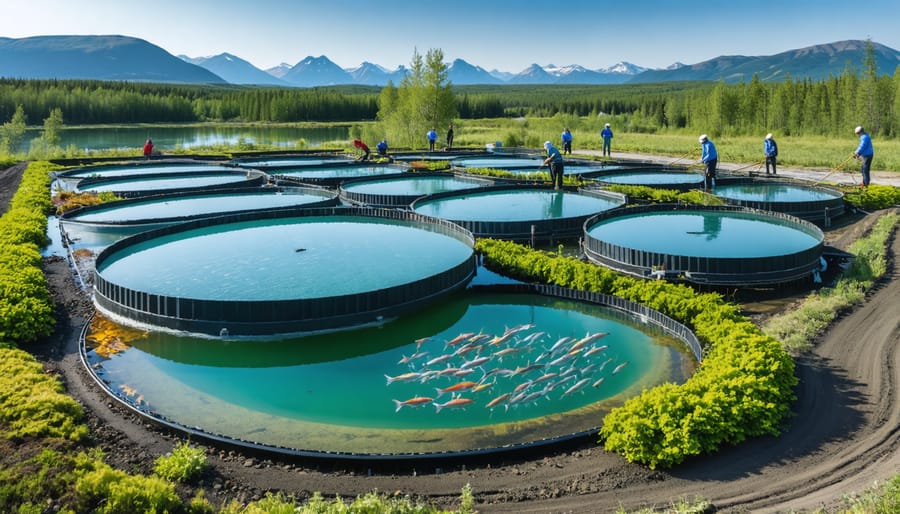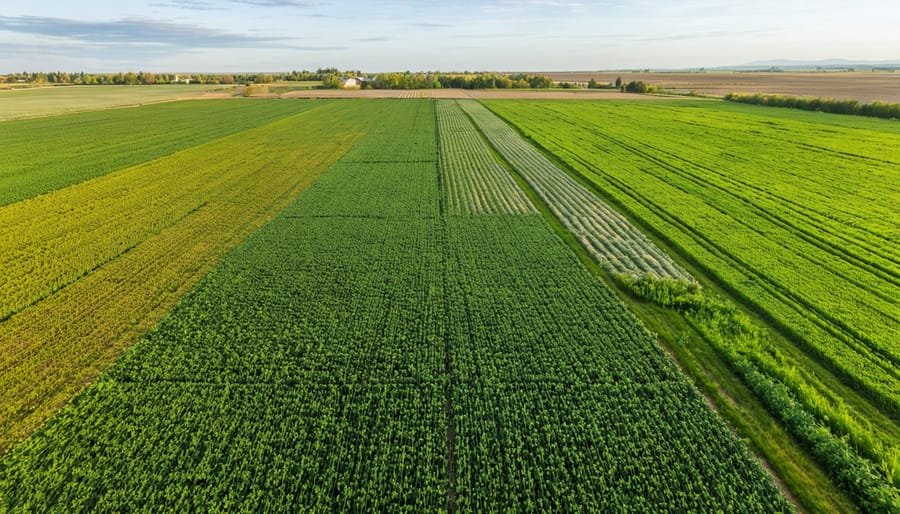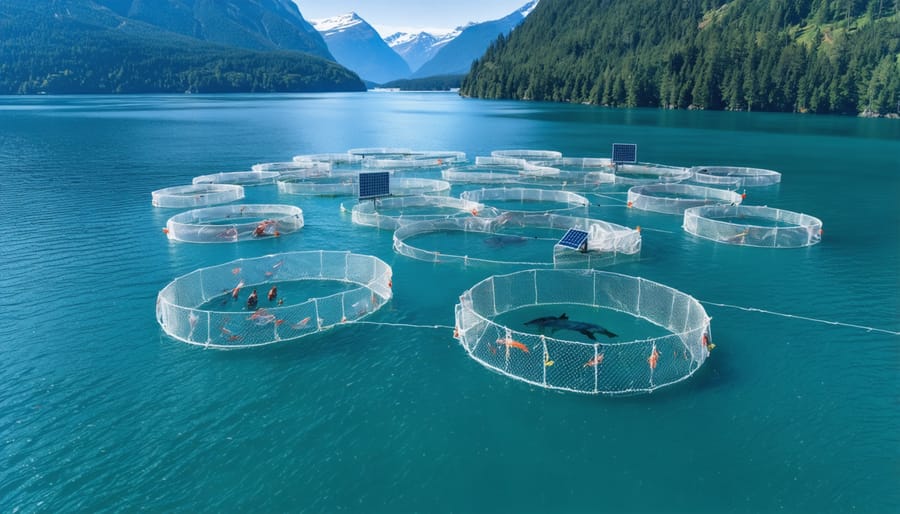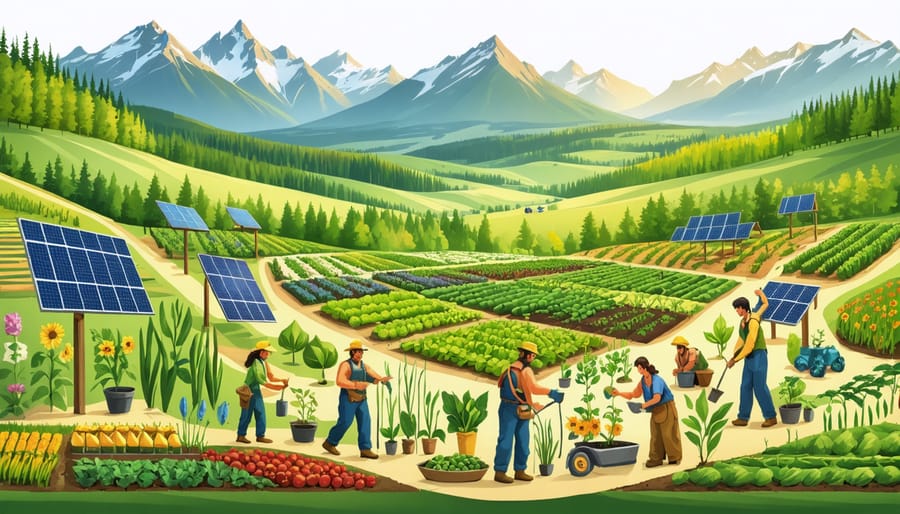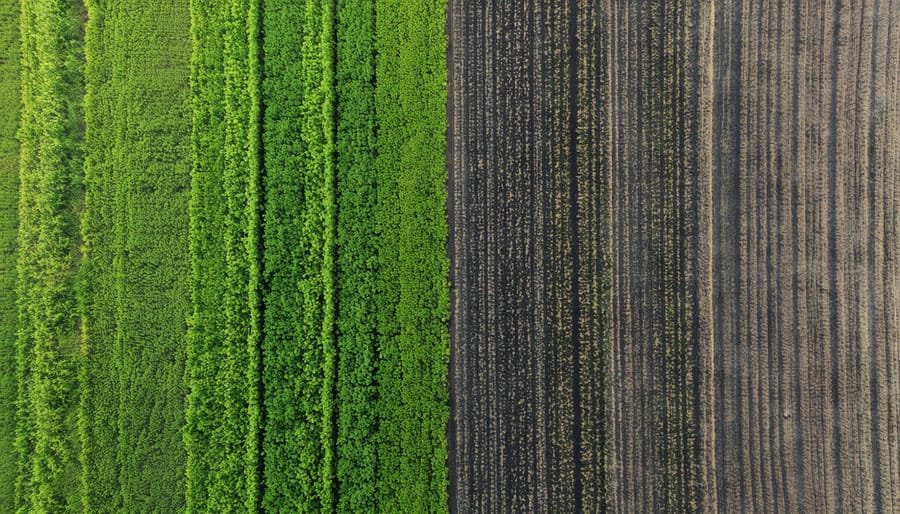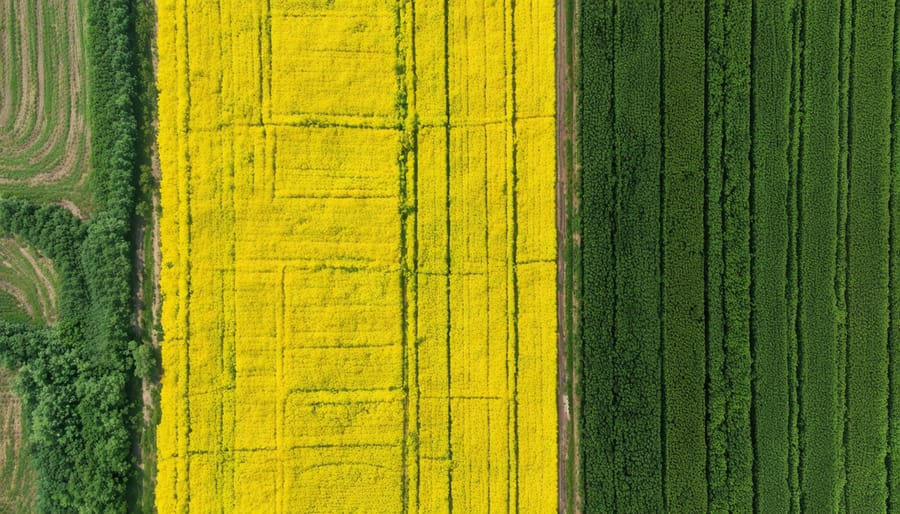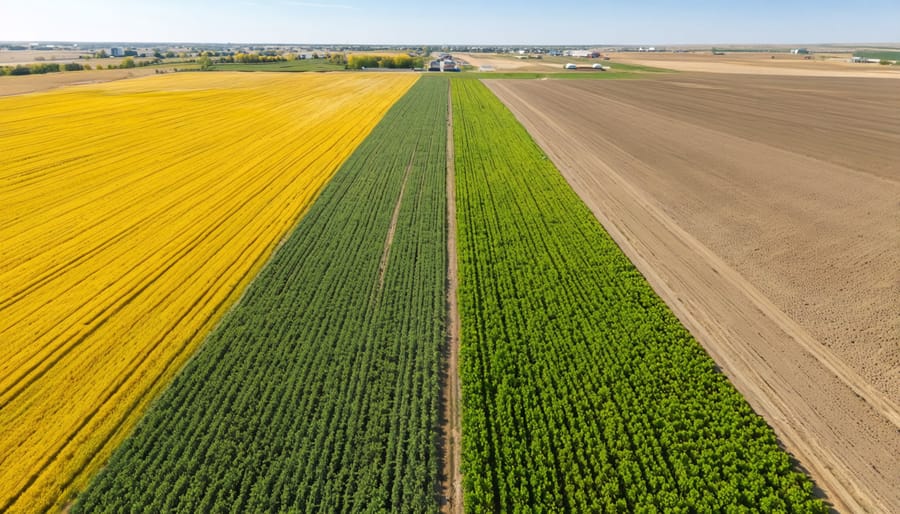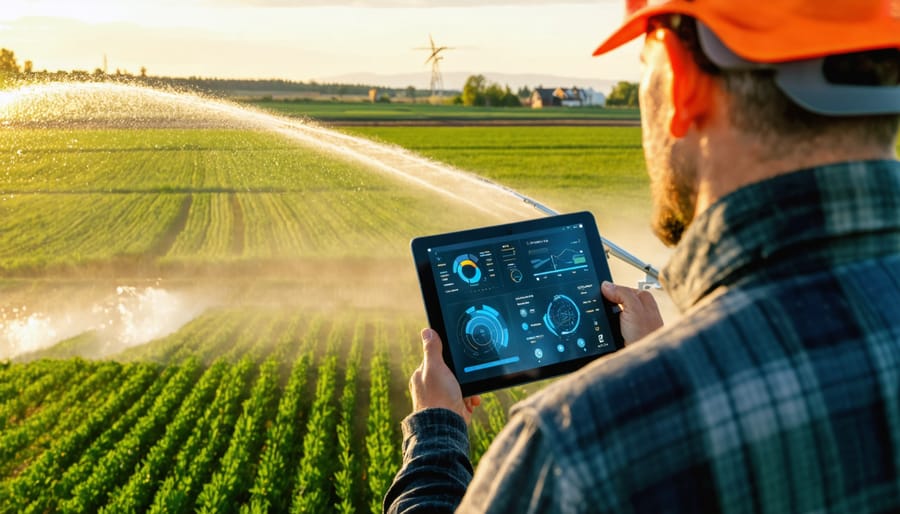Sustainable aquaculture stands at the forefront of Canada’s food security initiatives, offering a vital solution to meeting growing seafood demand while protecting our marine ecosystems. From British Columbia’s salmon farms to Ontario’s tilapia operations, Canadian aquaculture farmers are pioneering closed-loop systems that reduce environmental impact while maximizing production efficiency. These innovative practices combine traditional knowledge with cutting-edge technology, creating a model that produces 77,000 tonnes of sustainable seafood annually while maintaining strict environmental standards.
By implementing integrated multi-trophic aquaculture (IMTA) systems, Canadian farmers have demonstrated that fish farming can actually enhance local ecosystems rather than depleting them. These systems create a balanced environment where waste from one species becomes food for another, mimicking natural ecological relationships. The result is a 40% reduction in nutrient discharge and a 30% increase in overall farm productivity compared to conventional methods.
This transformation in aquaculture practices isn’t just environmentally sound – it’s economically vital, supporting over 26,000 Canadian jobs and generating $5.4 billion in economic activity. As global seafood demand continues to rise, sustainable aquaculture represents our best path forward for meeting nutritional needs while preserving our precious marine resources.
The Rise of Eco-Friendly Fish Farming in Alberta
Success Stories: Local Farmers Leading the Way
In the heart of Alberta’s agriculture landscape, forward-thinking farmers are proving that sustainable aquaculture isn’t just a concept – it’s a thriving reality. Take the story of Sarah Thompson, a third-generation farmer from Lacombe County, who transformed her family’s traditional cattle operation by incorporating a state-of-the-art recirculating aquaculture system (RAS). Through innovative farming technologies in Alberta, Thompson now produces 25,000 kg of rainbow trout annually while using 90% less water than conventional fish farming methods.
Just outside Edmonton, the Miller Family Farm has pioneered an integrated aquaponics system that combines Arctic char production with organic vegetable growing. Their closed-loop system produces not only premium fish but also supplies local restaurants with year-round fresh herbs and leafy greens, demonstrating how aquaculture can support diverse revenue streams.
Another inspiring example is the Crossroads Aquafarm near Red Deer, where Jason Chen has developed a solar-powered tilapia operation that’s become a model of energy efficiency. By implementing smart monitoring systems and automated feeding schedules, Chen has reduced operating costs by 40% while maintaining optimal growing conditions for his fish.
These success stories share common elements: careful planning, community engagement, and a commitment to environmental stewardship. Each operation has created local jobs, strengthened food security, and demonstrated that sustainable aquaculture can be both environmentally responsible and economically viable in Alberta’s unique climate.
Key Technologies Driving Sustainable Aquaculture
Recirculating Aquaculture Systems (RAS)
Recirculating Aquaculture Systems (RAS) represent a game-changing approach to fish farming that’s gaining significant traction across Canada, particularly in regions where water conservation is crucial. These indoor systems allow fish to be raised in controlled environments while recycling up to 98% of the water used in the process.
Here in Alberta, several farmers have successfully implemented RAS technology, creating efficient year-round operations regardless of our challenging climate. The system works by filtering and treating water continuously through mechanical filtration, biological processing, and oxygen injection, creating a closed-loop environment that maintains optimal conditions for fish growth.
The benefits of RAS are substantial for sustainable aquaculture. These systems significantly reduce water consumption compared to traditional methods, minimize environmental impact by containing waste, and provide better control over water quality parameters. For Canadian farmers, RAS offers the ability to raise fish species that wouldn’t typically thrive in our climate, while maintaining consistent production throughout the year.
From an economic perspective, while initial setup costs are higher, RAS operations typically see improved feed conversion rates and faster growth cycles. Local success stories include a Lethbridge facility that’s been producing Arctic char year-round since 2019, creating a steady supply for regional markets while using just a fraction of the water required by conventional systems.
Remember, proper training and regular system maintenance are essential for success with RAS technology. Many agricultural colleges across Alberta now offer specialized courses in RAS management.
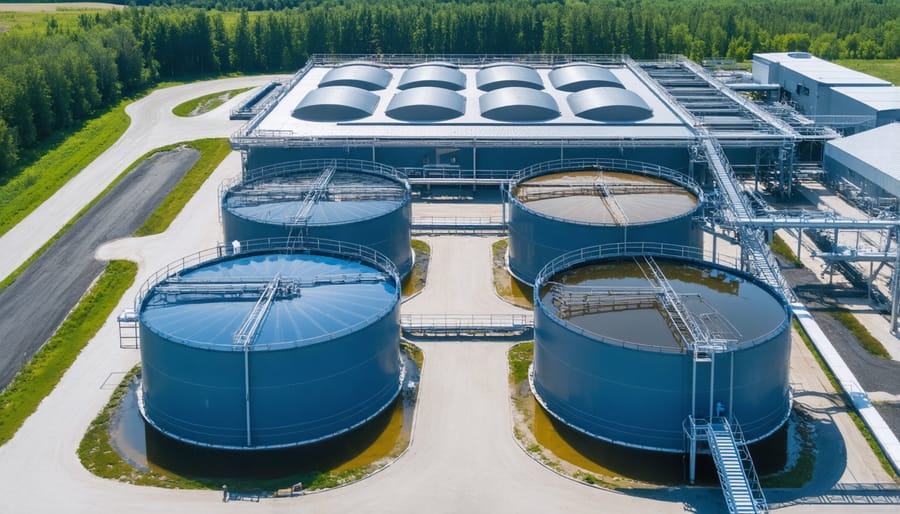
Integrated Multi-Trophic Aquaculture
Integrated Multi-Trophic Aquaculture (IMTA) represents one of the most promising approaches to zero-waste food production systems in Canadian aquaculture. This innovative method mirrors nature’s own ecological relationships by combining different aquatic species that work together in harmony.
Here in Alberta, forward-thinking farmers are successfully implementing IMTA systems that typically combine fish like rainbow trout with mussels and seaweed. The fish provide nutrients through their waste, which feeds the mussels, while the seaweed absorbs excess nutrients and helps maintain water quality. This creates a mini-ecosystem where nothing goes to waste.
Local success stories include the Miller Family Farm near Lethbridge, where their IMTA system produces 25 tonnes of trout alongside 5 tonnes of mussels annually. They’ve reported a 40% reduction in feed costs compared to traditional single-species operations.
The beauty of IMTA lies in its adaptability to different scales. Whether you’re managing a small farm pond or a larger commercial operation, the principles remain the same. By working with nature rather than against it, these systems typically require fewer external inputs while producing multiple revenue streams.
For farmers considering IMTA, start small by introducing complementary species gradually. Consider partnering with experienced operators or joining local aquaculture associations for guidance and support.
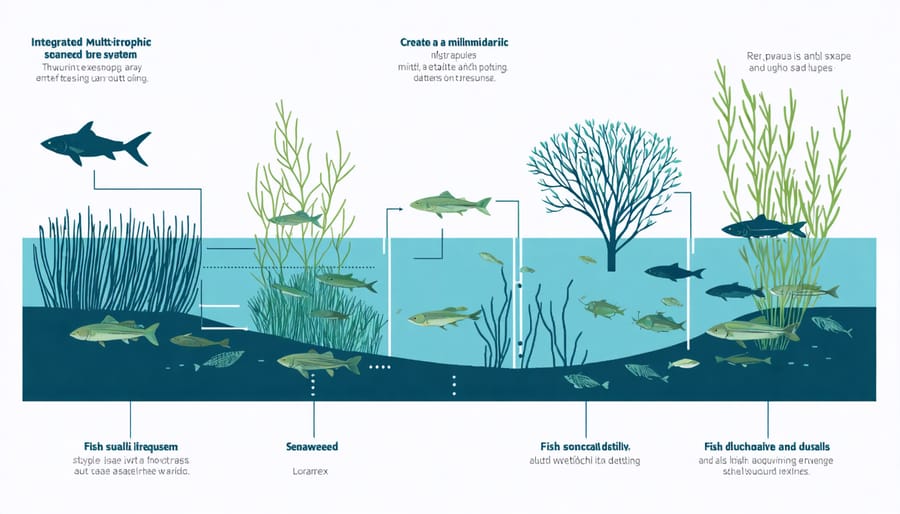
Environmental Impact and Water Conservation
In sustainable aquaculture, water management is crucial for both environmental protection and operational efficiency. Alberta fish farmers are leading the way with innovative resource optimization strategies that minimize water usage while maximizing production.
Recirculating Aquaculture Systems (RAS) have become increasingly popular among Canadian producers, allowing for up to 98% water reuse. These systems filter and treat water continuously, reducing the need for fresh water intake and minimizing discharge into natural waterways. Many Alberta operations have reported annual water savings of 75-85% compared to traditional flow-through systems.
Water quality monitoring is essential for maintaining healthy fish populations while protecting local ecosystems. Modern sensors and automated systems help farmers track key parameters like dissolved oxygen, pH levels, and temperature in real-time. This precise monitoring ensures optimal conditions while preventing unnecessary water exchange.
Innovative biological filtration methods, including constructed wetlands and aquaponics systems, are helping farmers naturally process waste and maintain water quality. These integrated approaches not only reduce environmental impact but also create additional revenue streams through vegetable production.
Local success stories include the Lethbridge Aquaculture Research Centre, where water-efficient practices have cut consumption by 80% while maintaining production levels. Their system demonstrates how proper water management can benefit both the environment and the bottom line.
By implementing these water conservation practices, farmers can reduce their environmental footprint while building more resilient and profitable operations. The key is finding the right balance between production needs and responsible resource management.
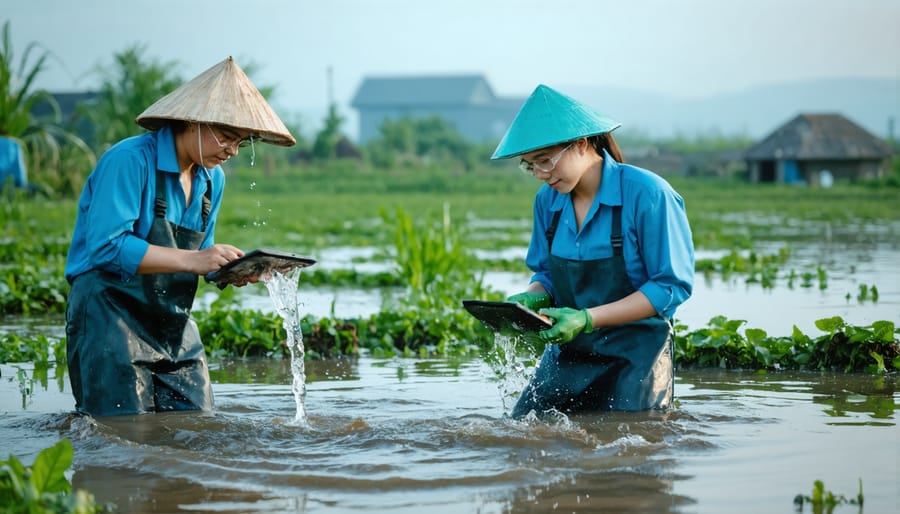
Getting Started with Sustainable Aquaculture
Starting your journey in sustainable aquaculture begins with thorough planning and understanding of local regulations. In Alberta, connect with the Alberta Aquaculture Association to learn about licensing requirements and available support programs. Consider starting small with a pilot system of 500-1,000 litres to gain hands-on experience.
Select fish species that thrive in our climate, such as rainbow trout or Arctic char. These cold-water species are well-suited to Alberta’s conditions and have strong market demand. Invest in quality water filtration systems and monitoring equipment to maintain optimal conditions.
Integrate renewable energy sources where possible – solar panels can power aerators and water pumps, reducing operational costs and environmental impact. Consider implementing aquaponics systems, which combine fish farming with vegetable growing, maximizing resource efficiency and creating multiple revenue streams.
Network with established sustainable aquaculture farmers in your region. Many experienced operators are willing to share insights and best practices. Take advantage of workshops and training programs offered through local agricultural extension services.
Remember to develop a solid business plan that includes sustainable practices from day one. This approach often leads to better long-term profitability while maintaining environmental responsibility.
Sustainable aquaculture in Canada stands at a promising crossroads, with innovative technologies and responsible practices leading the way forward. Our farming communities have demonstrated that balancing environmental stewardship with profitable fish production is not only possible but essential for our future food security. As we look ahead, increased investment in research, stronger industry collaboration, and growing consumer demand for sustainably sourced seafood will continue to drive positive change in this sector. By embracing these practices today, Canadian aquaculture farmers are helping build a more sustainable tomorrow for generations to come.

